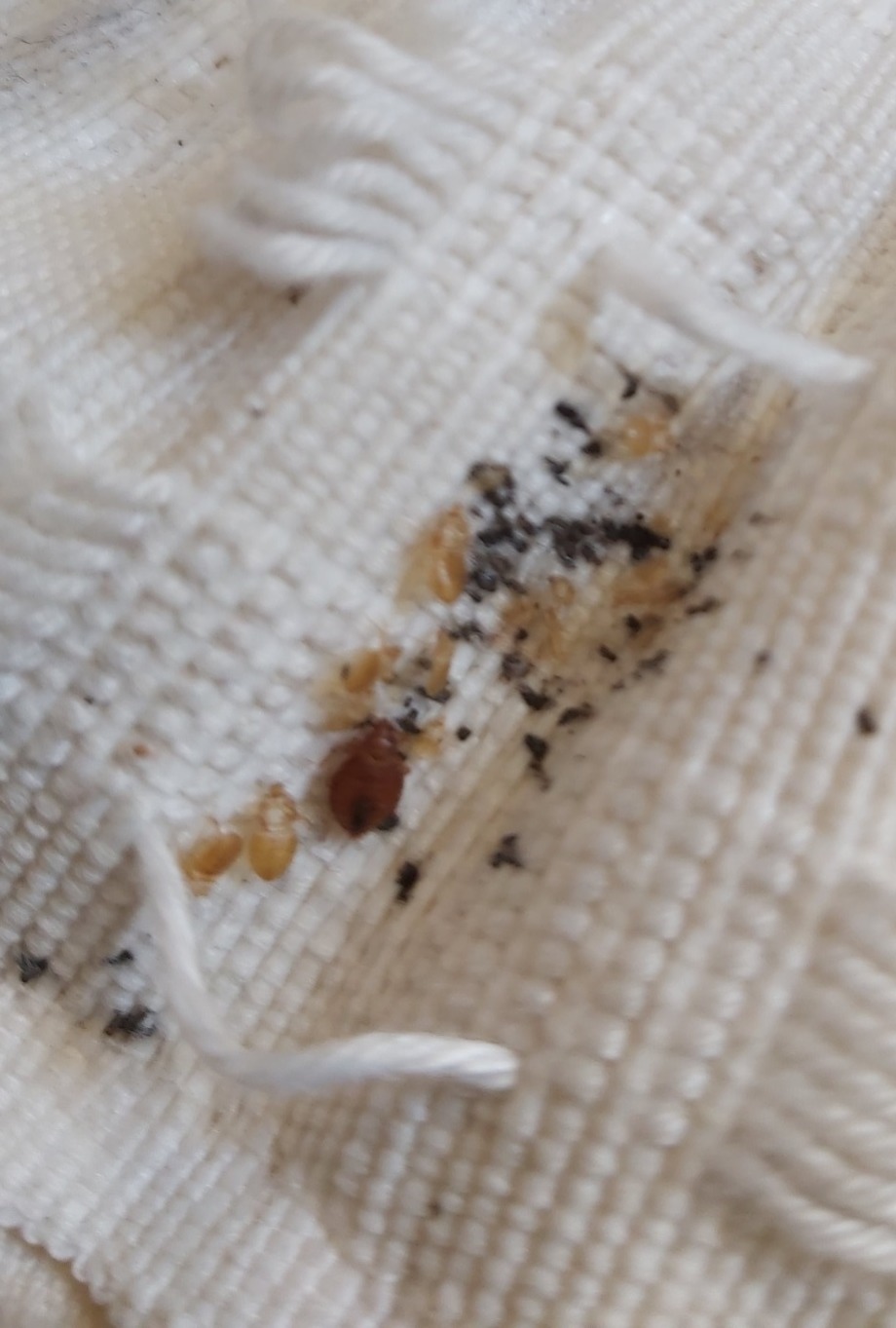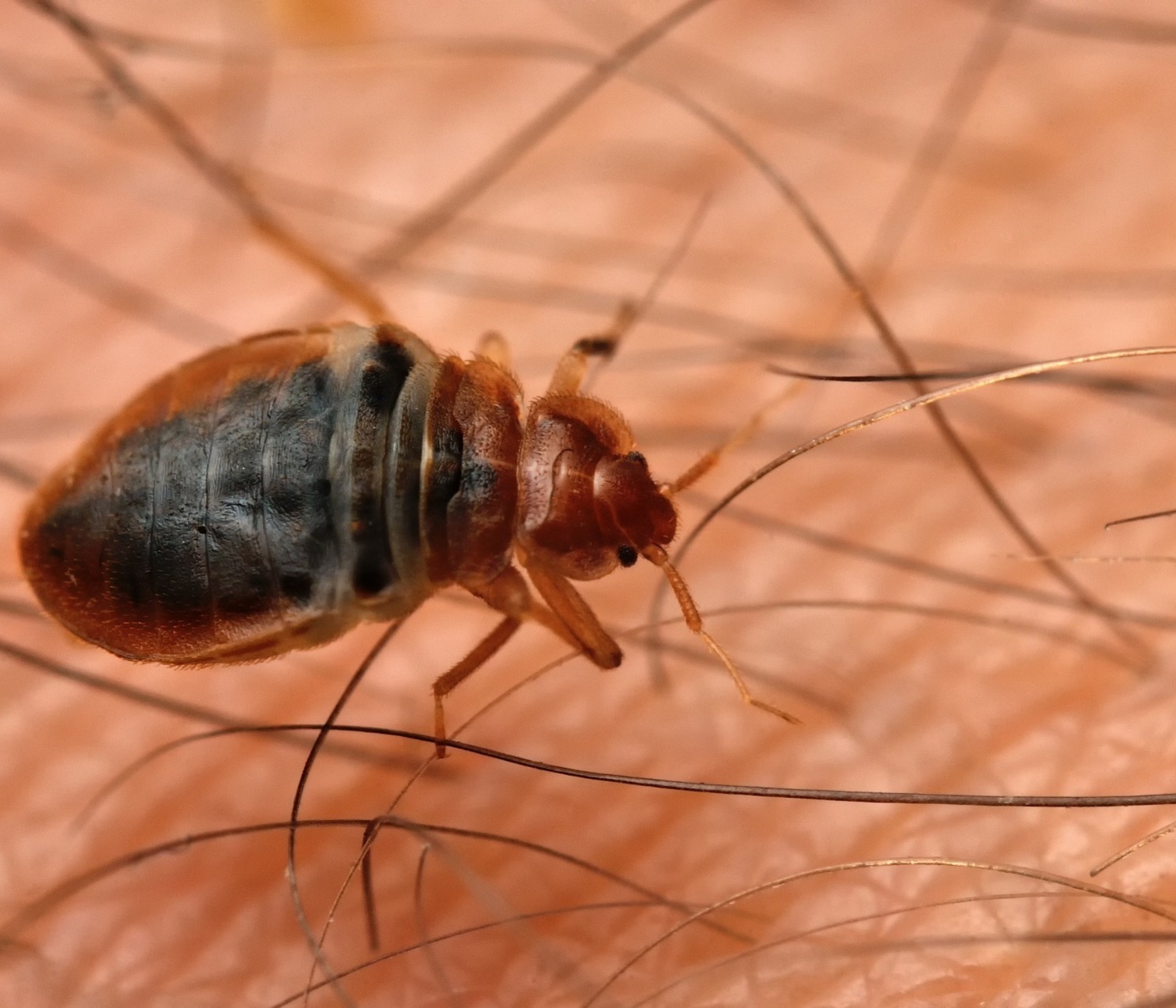Total Bed Bug Control in Reading
Posted on 18th December 2019 at 09:02
Without a shadow of doubt the worst pest that we will deal with when delivering pest control across Reading is the bed bug; just for the cringe factor alone its the worst! These bloodsucking pests cause misery for sufferers with disturbed sleep, constant itching from the numerous bites and that whole thing - "We have bed bugs, therefore we must be dirty people!"
This is not true, bed bugs are human parasites that have been with us for thousands of years. In many ways they are no different from mosquito's which have a much different reaction in the human physic - a mosquito bite is something that you get in the summer and its just part of the environment whereas bed bugs are dirty and have a sinister taint to them.
Its time that we looked at bed bugs and explored our relationship and look at what we can do to prevent an infestation.
Bed bugs are thought to have existed as far back to the time of the dinosaurs, recent research has found that these insects were parasites of early mammals. We see many insects that are parasites such as bite mites for avian species and certain types of flea like the rabbit flea that have evolved to live in and around the animals nest.
Human beings are REM sleepers and with the exception of some ape species we construct a purpose built place to sleep in - our bed. Other animals will move about using different places to rest but you find us going back to the same place all the time - this is our weakness as the bed bugs only have to find the bed and they have a steady food supply.
So now we know where the insects came from and why they are around lets think about what it means to have bed bugs. My mum used to kiss me goodnight as a child and always say -
"Sleep tight hope the bed bugs don't bite". There is definitely a social stigma associated with the idea of having bed bugs but you wouldn't inflict that onto a child just before it goes to sleep would you?
Bed bugs were almost wiped out following the Second World War; the mass movement of people and cramped housing of thousands of soldiers led to outbreaks of lice - a wonder pesticide called DDT was produced and seen as the silver bullet for all insect pests like bed bugs and lice.
Its use was that widespread in every day life that even the Disney Company manufactured DDT impregnated Mickey Mouse wallpaper; we now know how poisonous this chemical is and it has been banned since 2001.

Picture taken at a bed bug job in Reading recently: highlighting how these insects can travel this is the pleat at the top of the bedroom curtains. Bed bugs release a harbourage pheromone where males attract females to mate.
So if bed bugs were almost wiped out following WW2 through the use of DDT, how is that today these insects are reaching epidemic proportions? Well since the 1950's two major things have happened that have changed the face of the world. The first is that the world has become a much smaller place with the frequency of modern aviation and the insatible demand for foreign travel and secondly, it became even smaller when the Berlin Wall came crashing down; the result was it opened up a huge swathe of land for human migration both to and from which was previously rarely visited - in a sense the 1950's all over again.
In the 1960's and 1970's few people would have travelled outside of the UK, as most people worked close to where they lived it was uncommon to fly away on holiday and business. Nowadays business is conducted globally and we all look at an overseas holiday if we can, with more exotic locations being visited than ever before.
This increased frequency of travel and range means that we will be exposed to the two strains of bed bugs out there - Cimex lectularius and Cimex hemipterus. C. lectularius is found worldwide whilst C. hemipterus is found in tropical climates. There is little difference between the two species with the slight exception that C. lectularius is developing increasing resistance to the pesticides used in its control. A worldwide pest that we'll treat on a regular basis in Reading.
Western Europe and indeed the USA have restrictions and licenses on the types of chemical's that can be used in the control of insects like bed bugs; there is a desire to reduce chemical contamination of the environment and so we keep seeing reductions in the types of chemicals allowed to be used.
This was not the case in Eastern Europe and Russia where they use more volatile chemicals for things like bed bug control; we have been fighting these insects with one hand tied behind our back and this situation is escalating as even more chemicals are withdrawn from use every year.
The other issue is that incomplete treatments by pest controllers actually strengthens the bed bug population: for example we dismantle effected furniture to get deep inside the frame of the bed and we remove electrical socket covers to see if they are inside - a bed bug will have the same cross section as a single piece of paper so think about where that can hide?
If a treatment is carried out poorly some bed bugs will survive and over time and especially through the application of the same chemicals these will produce offspring who have a natural resistance to those chemicals. This continues until you have a strain of bed bugs that can absorb the pesticides and metabolise them turning the toxins into harmless compounds.
One thing that we use in every bed bug treatment that we carryout in Reading is heat - all lifeforms have a maximum temperature that they cannot survive above, its called ominously enough 'The Thermal Death Point'.
For bed bugs its a range from 44 degrees to 49 degrees Celsius, we use 180 degree steam in all our treatments and we can follow that up with 60 degree portable heaters should the infestation be that far advanced and we have seen some really big infestations!
There is certainly a stigma about talking about bed bugs and people are frightened to ask for help.

Picture taken at another bed bug job in Reading: this was an Ikea bunkbed, we started dismantling the bed and found these hiding in the round drilled out sockets that hold the barrel nuts. At this point we decided to cut the bed in half and burn it!

This was a job at a bedsit off the Oxford Road: new tenants complaining of bites. The carpets had been replaced and the rooms decorated, as they had bought in their own furniture there was one place for the bed bugs to hide - inside the wall mounted electrical sockets!
If these insects are so widespread and largely encountered whilst travelling what can we do to prevent ourselves from picking these up?
I have been on holiday and had bed bugs twice, once was after my wife had been sat in the hotel reception on a sofa where she had picked up one as a hitch hiker and the second was a hotel where we stayed for just a single night and we had no other rooms available for us, here's what you do -
When you arrive in your room, resist the urge to put your cossies on and head down to the pool. Put your cases on the floor and pull the bed away from the wall - you're looking for one of the key indicators that bed bugs are present = bloodspots.
Bed bugs piece the flesh and they will simply find a capillary and allow our systolic blood pressure to pump blood into the insects stomach - they don't suck our blood; we actually feed them. They only want the solid protein - hemoglobin and not the liquid part the plasma so they defecate immediately filtering as they feed.
An adult bed bug will feed several times in a night and this will be sufficient for a couple of days, you may see blood spots on the sheets but certainly around the harbourage site as shown.
The second thing to be on the lookout for are discarded skins, if the bed holds a full infestation you will find bed bugs in all stages of development - eggs, nymphs and adults. As the insects grow they discard their old outer skeleton and these can be seen as debris lying on brackets and around the ends of wooden slats.
There is also a smell associated with bed bugs - its like a dirty damp towel so don't be afraid to give the mattress a sniff!

We provide a complete bed bug eradication service in Reading, all our treatments start with high temperatures and we back this up with the latest chemicals. These pesticides contain compounds like insect growth regulators so within the one application there are certain chemicals to kill the insects but others which are hormone based that prevent the insect from shedding its outer skin meaning that the juveniles will stay in that growth stage.
We will take your bed apart and get down into the deeper recesses hunting and destroying bed bugs lurking within, when it comes to delivering a successful treatment its all about preparation and thoroughness. We like to strip the bedding off for you catching any insects still in the sheets, these will require a hot wash at temperatures above 60 degrees and we need the rooms to be treated to be cleaned and as tidy as you make them.
Total bed bug control from Reading Pest Control.
Tagged as: Bed bugs
Share this post:












